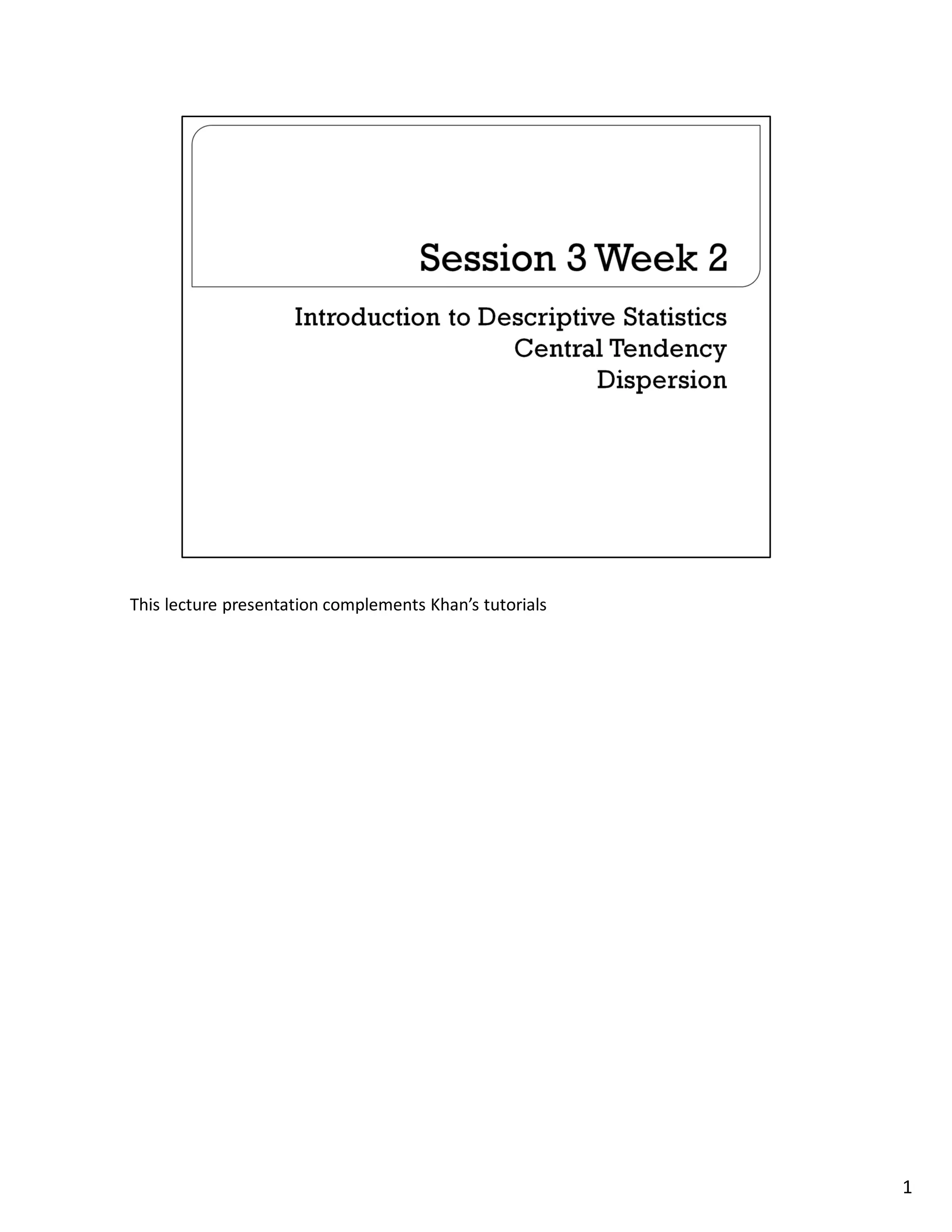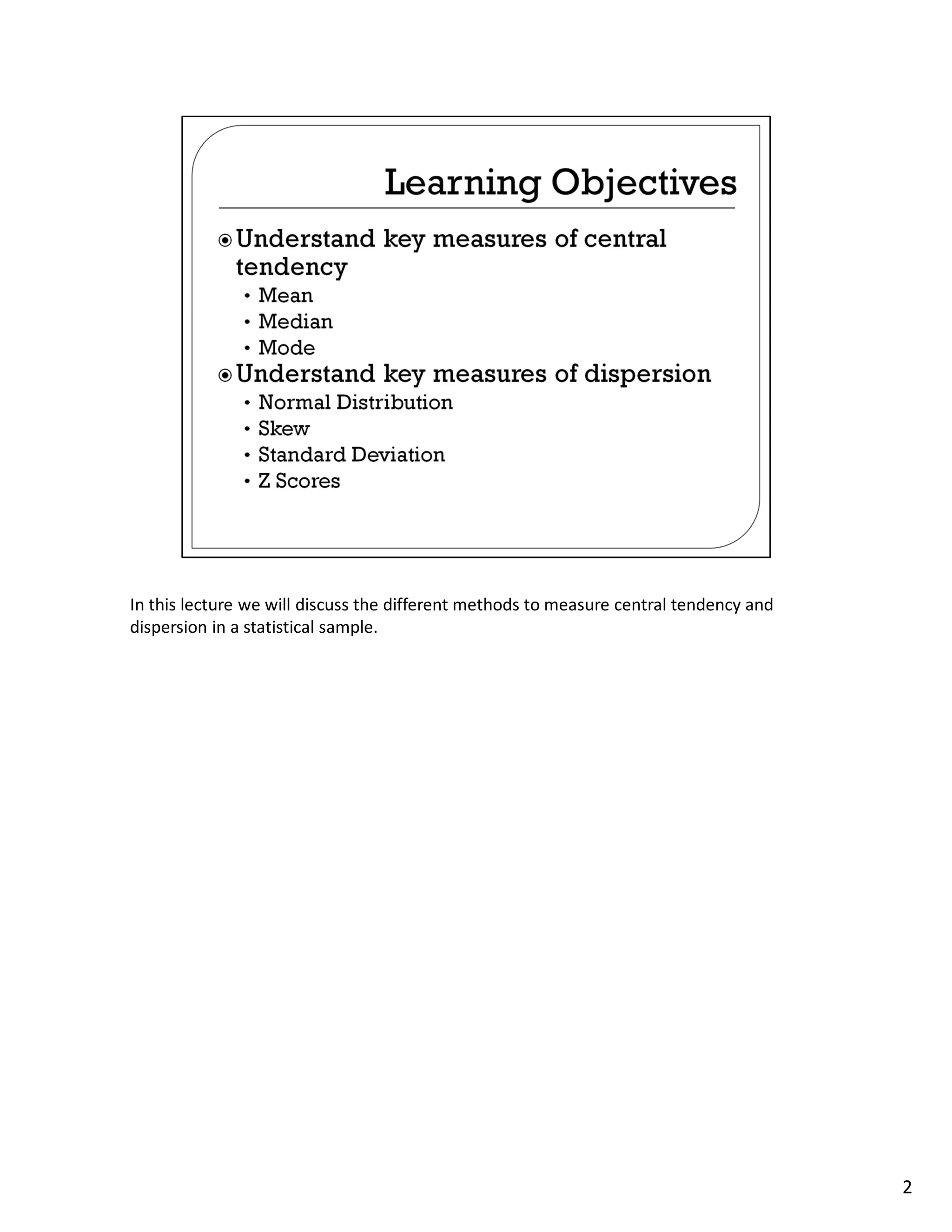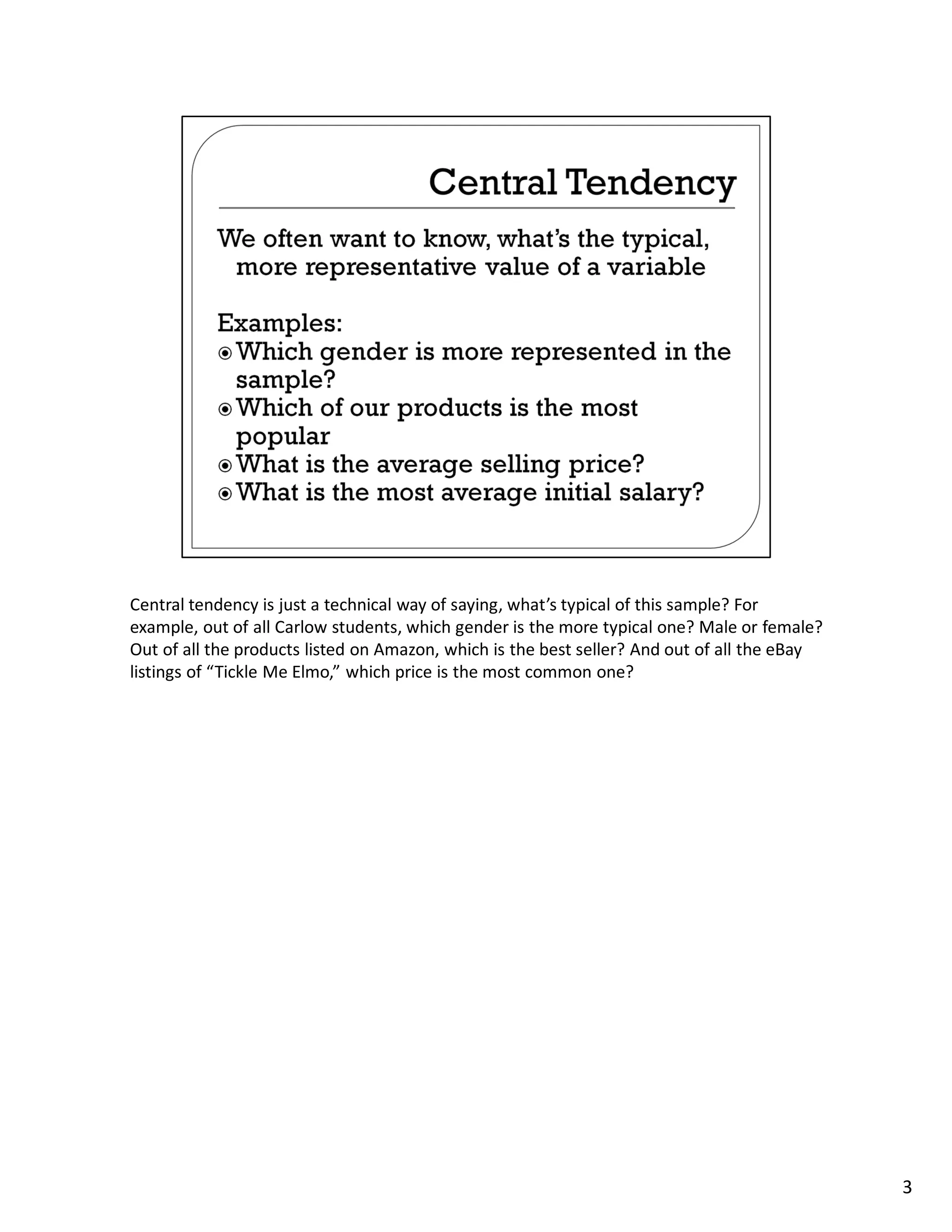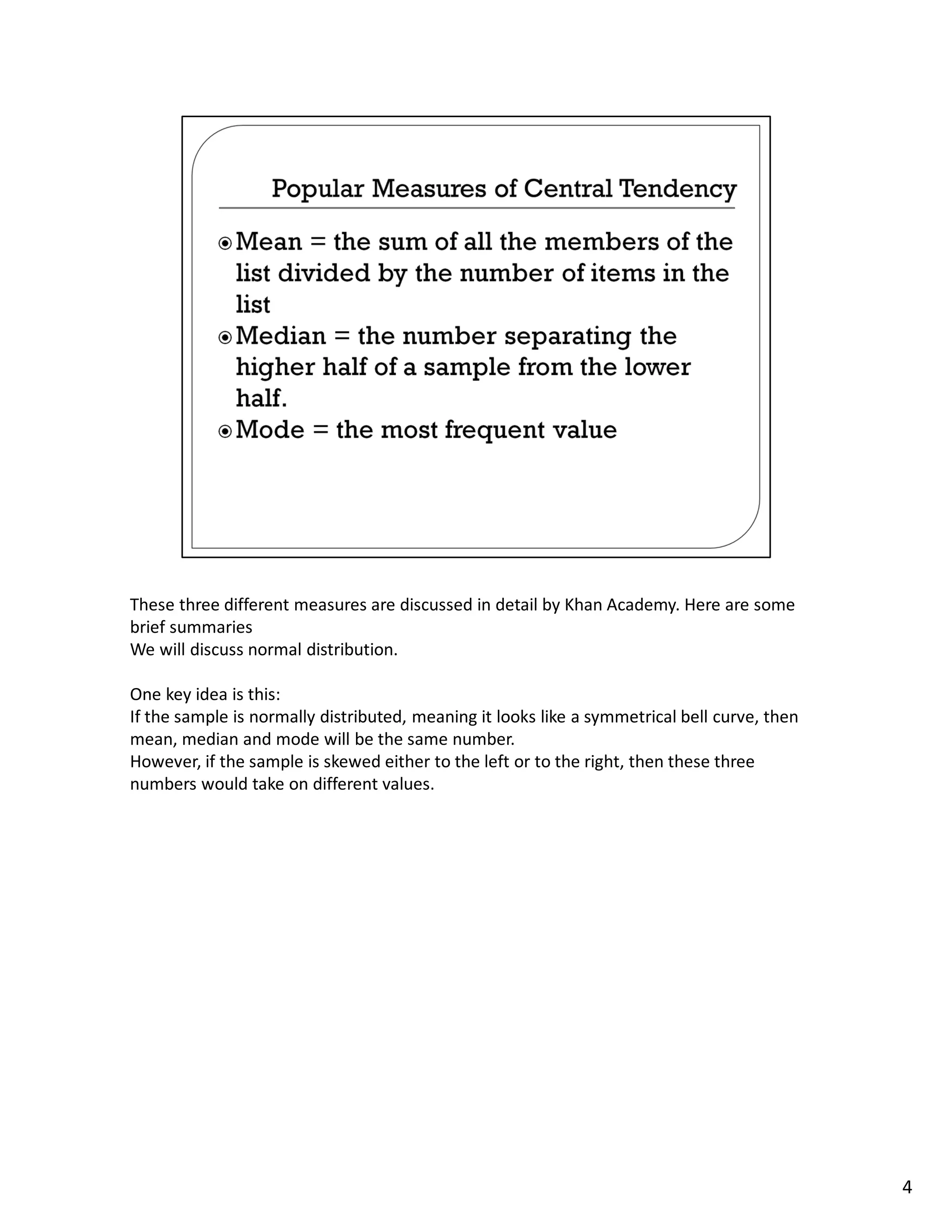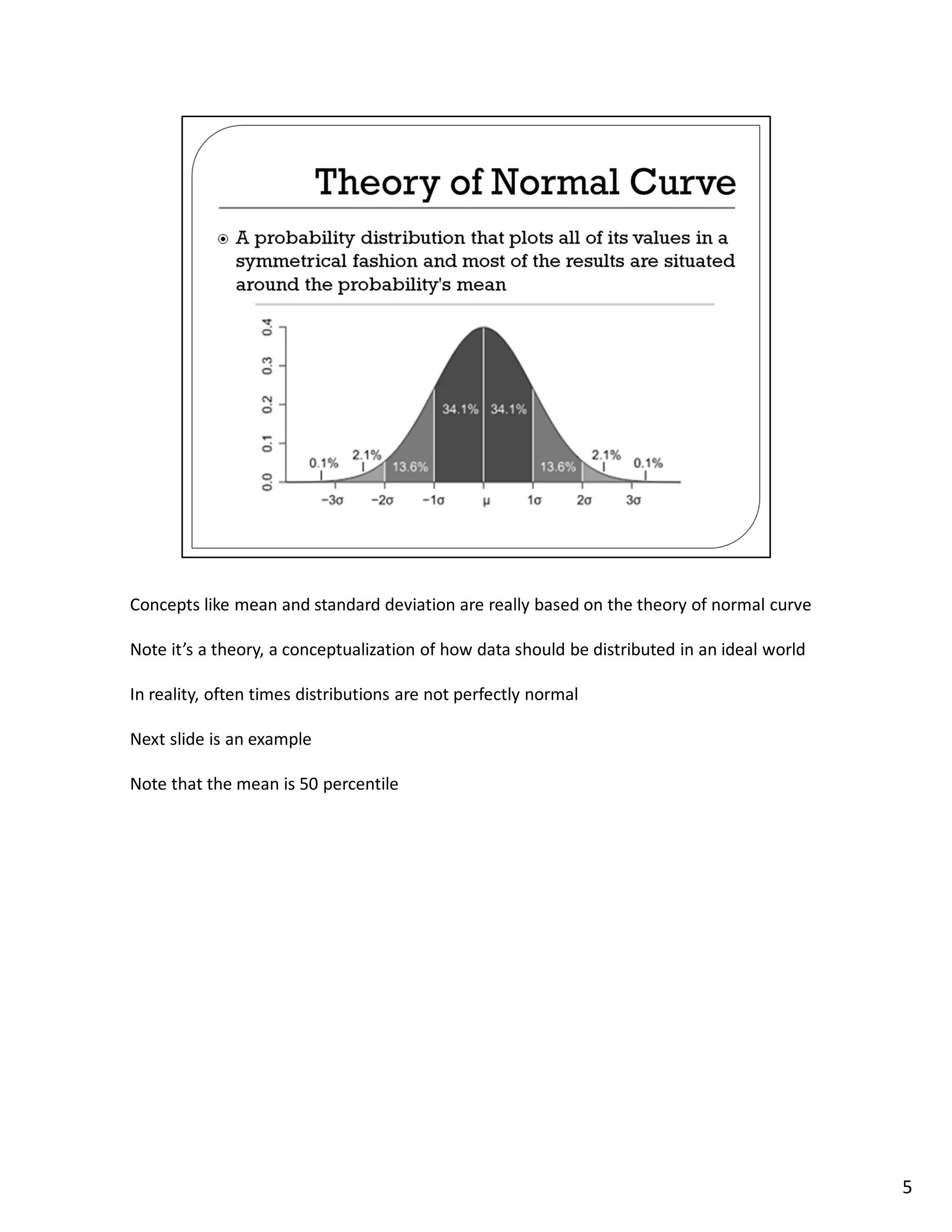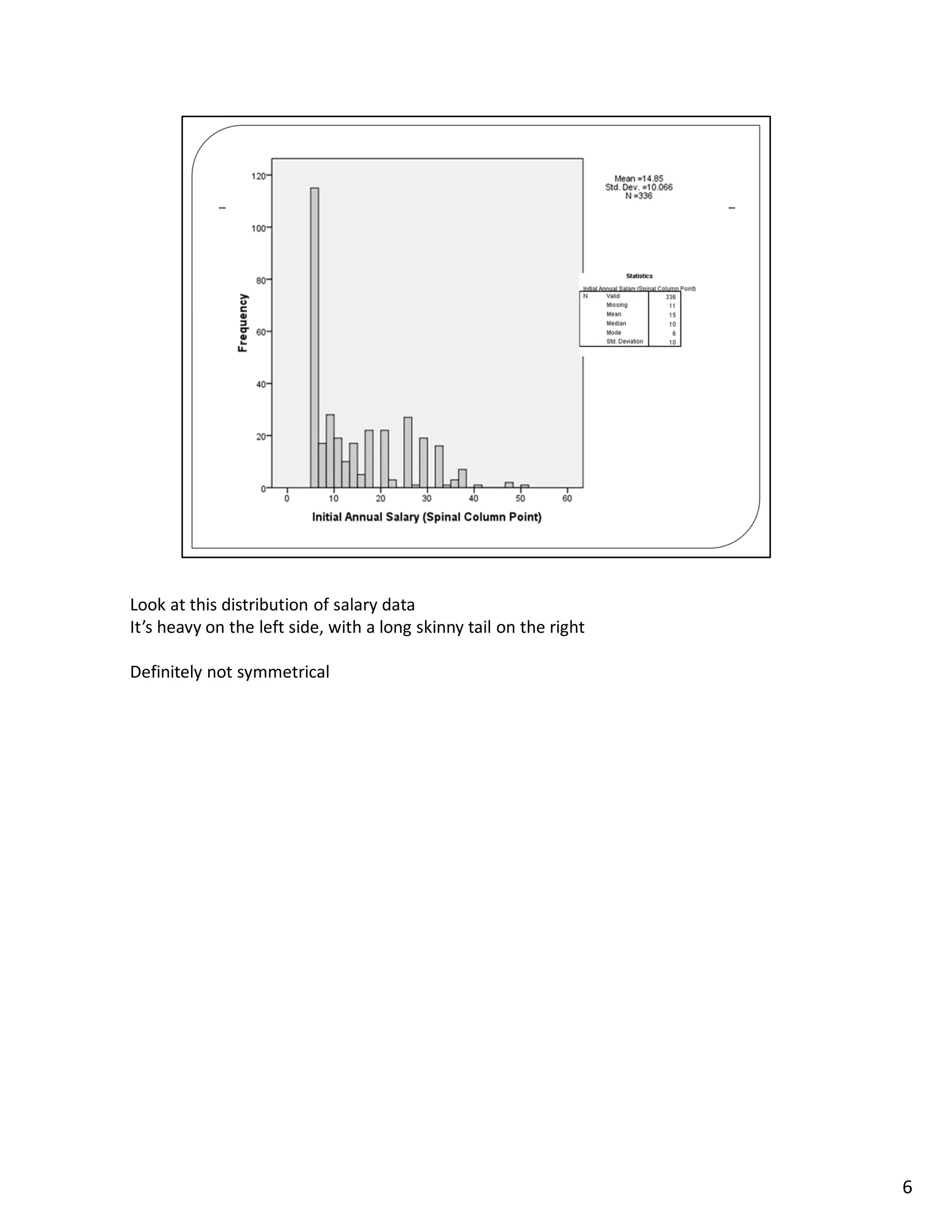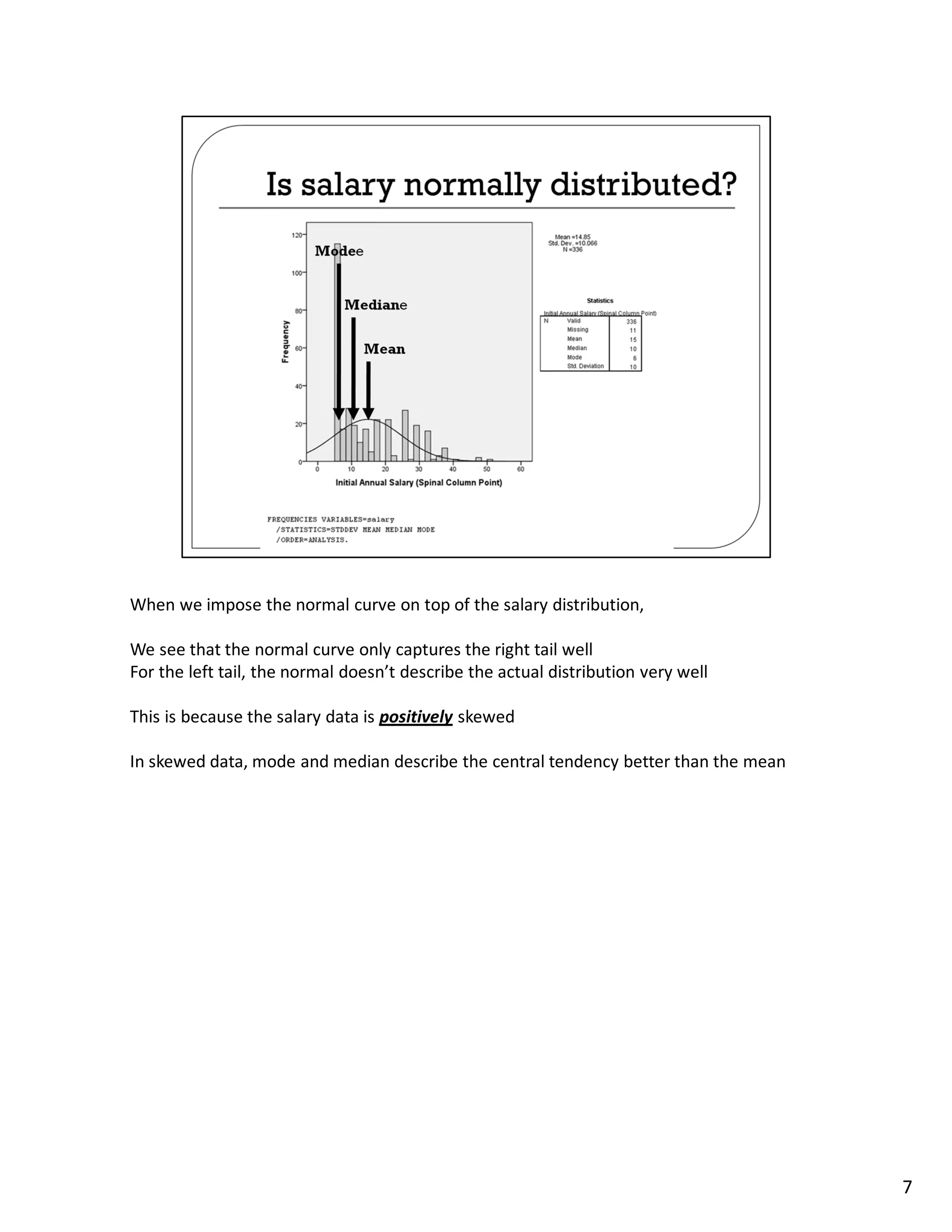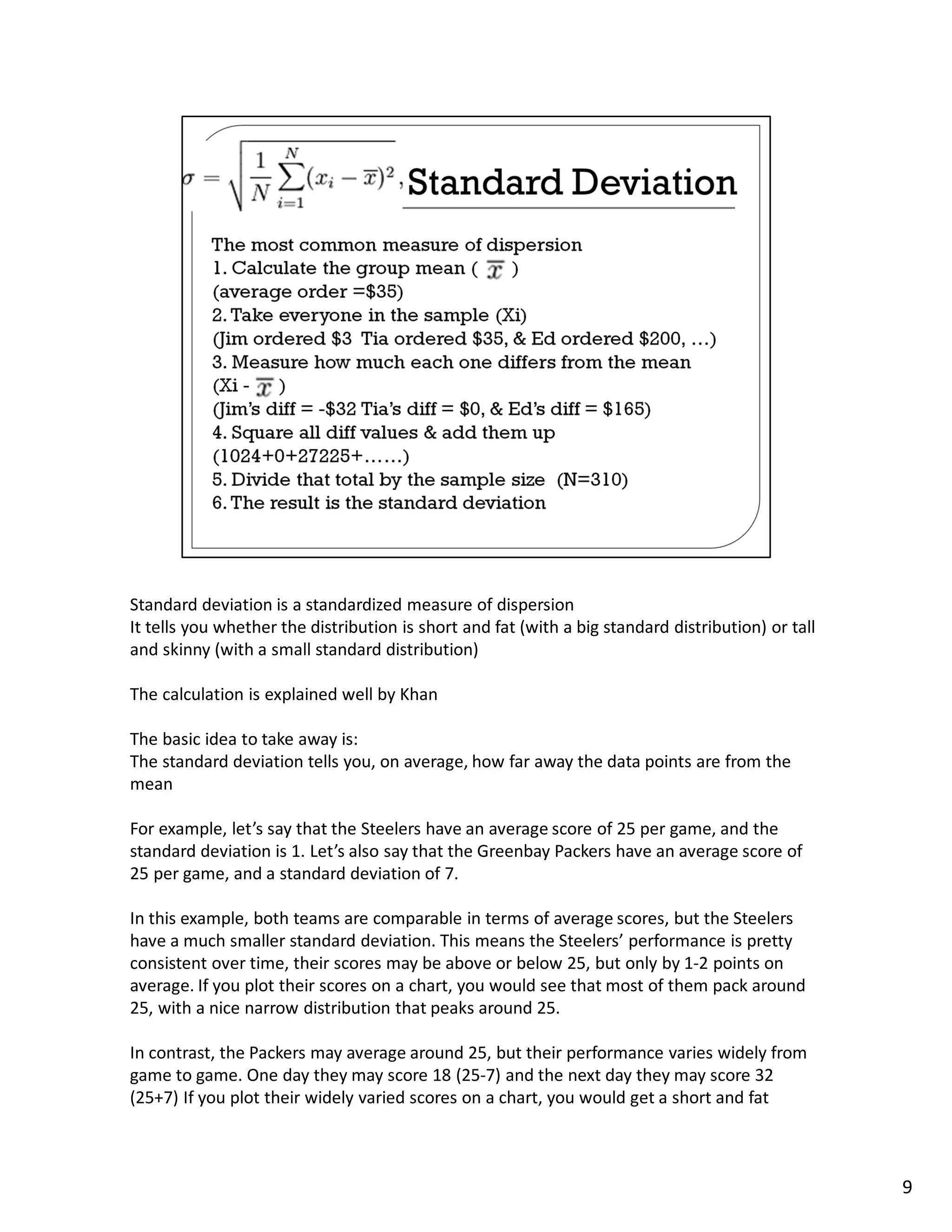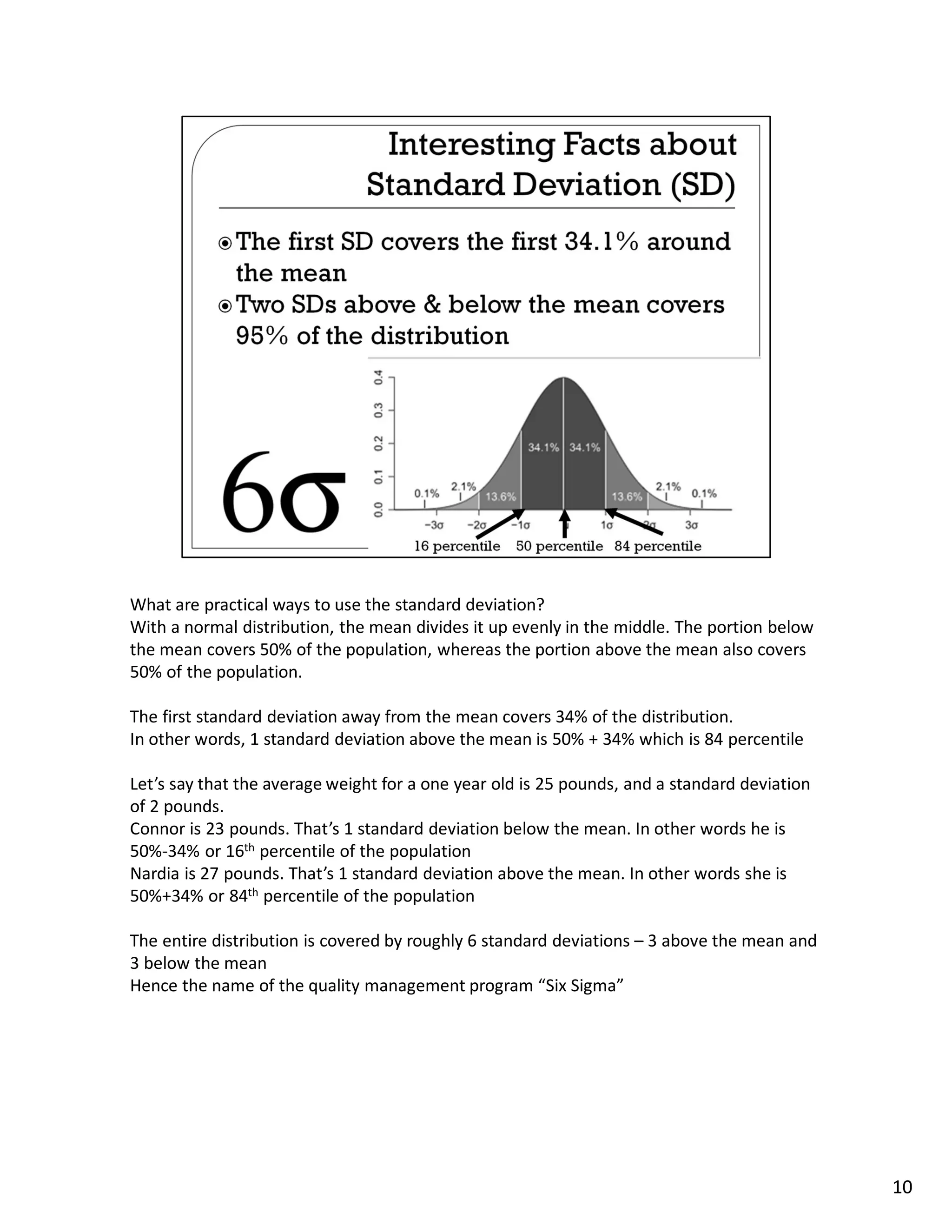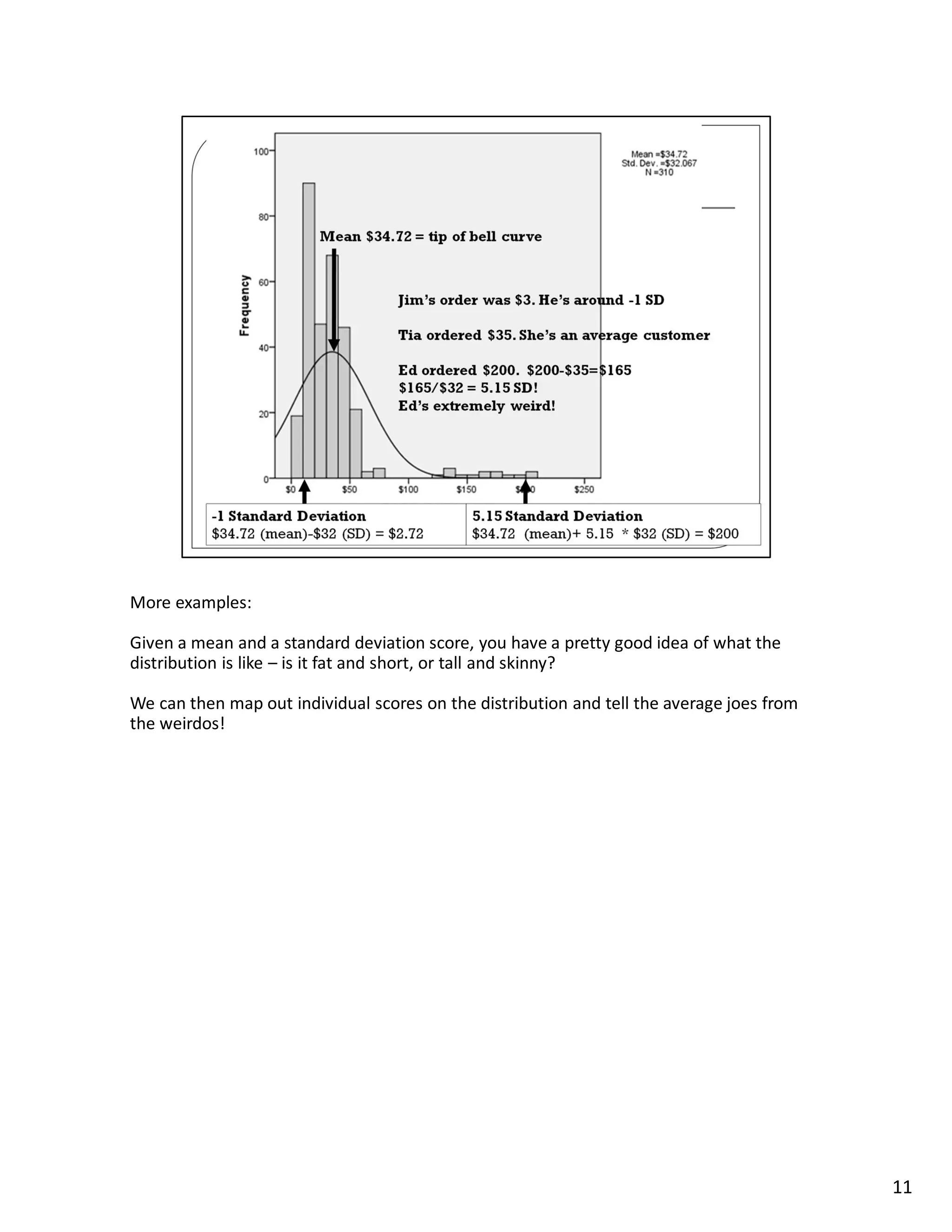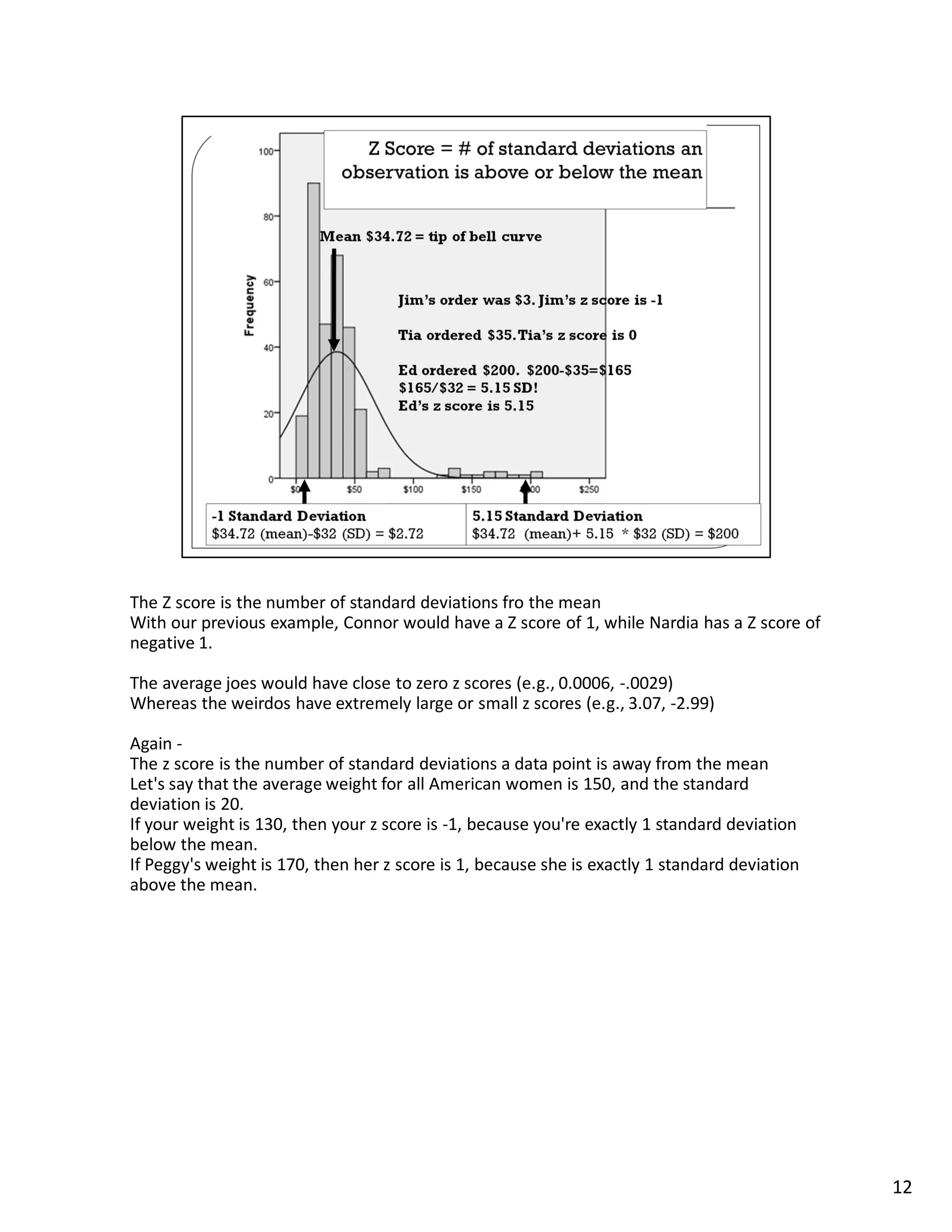This lecture discusses methods for measuring central tendency and dispersion in statistical samples. Central tendency refers to the most typical or common value in a sample, such as the average or median. Measures of central tendency include the mean, median, and mode. Dispersion describes how spread out or varied the values in a sample are and is measured by the standard deviation. The lecture explains these concepts and provides examples to illustrate how measures of central tendency and dispersion can be used to analyze and understand sample data distributions.
